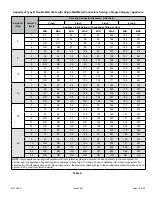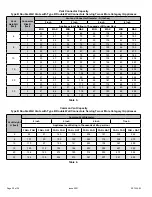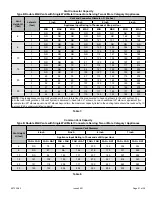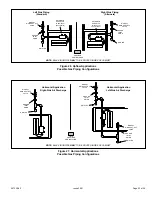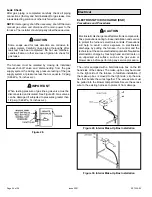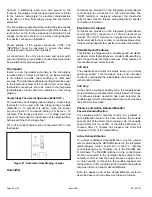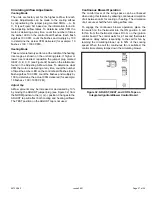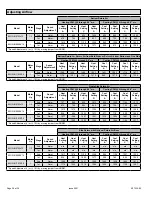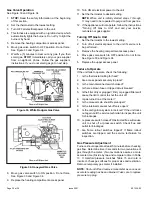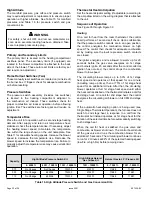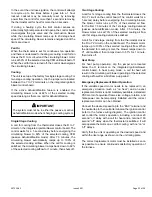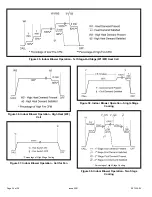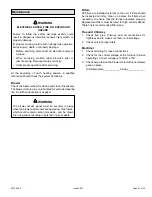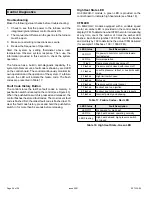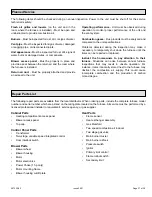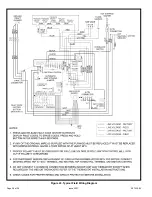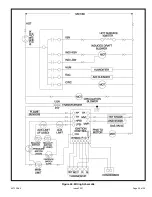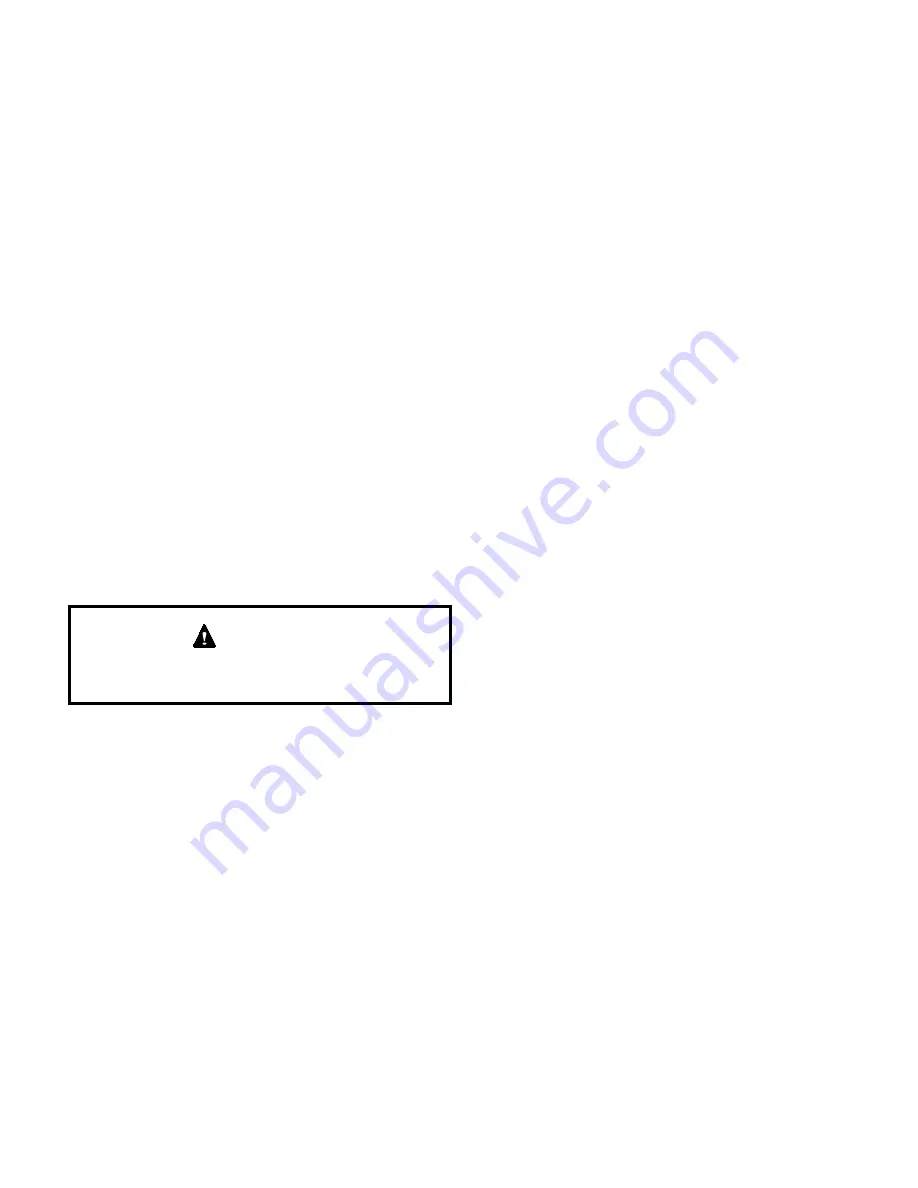
507335-02
Page 33 of 39
Issue 2001
In the event the unit loses ignition, the control will attempt
to recycle up to five times before it goes into a 1 hour
lockout. Lockout may be manually reset by removing
power from the control for more than 1 second or removing
the thermostat call for heat for more than 3 seconds.
If during a heating cycle the limit control senses an
abnormally high temperature and opens, the control board
de-energizes the gas valve and the combustion blower
while the circulating blower ramps up to 2nd stage heat
speed. The circulating blower remains energized until the
limits are closed.
Fan On
When the thermostat is set for continuous fan operation
and there is no demand for heating or cooling, a call for fan
closes the R to G circuit and the circulating blower motor
runs at 50% of the selected cooling CFM until switched off.
When the call for fan is turned off, the control de-energizes
the circulating blower.
Cooling
The unit is set up at the factory for single stage cooling. For
two stage cooling operation, clip the jumper wire located
between the Y to Y2 terminals on the integrated ignition/
blower control board.
If the active dehumidification feature is enabled, the
circulating blower runs at 82% of the selected cooling
speed as long as there is a call for dehumidification.
The system must not be in either the passive or active
dehumidification mode when charging a cooling system.
IMPORTANT
Single Stage Cooling
A call for cooling from the thermostat closes the R to Y
circuit on the integrated ignition/blower control board. The
control waits for a 1-second delay before energizing the
circulating blower to 82% of the selected cooling CFM
(passive dehumidification mode). After 7.5 minutes, the
circulating blower automatically ramps up to 100% of
the selected cooling airflow. When the call for cooling is
satisfied, the circulating blower ramps back down to 82%
of the selected cooling airflow for 1 minute, then shuts off.
Two Stage Cooling
A call for 1st stage cooling from the thermostat closes the
R to Y circuit on the control board. The control waits for a
1-second delay before energizing the circulating blower.
The blower motor runs at 57% of the selected air flow
for the first 7.5 minutes of the 1st stage cooling demand
(passive dehumidification mode). After 7.5 minutes, the
blower motor runs at 70% of the selected cooling air flow
until 1st stage cooling demand is satisfied.
A call for 2nd stage cooling from the thermostat closes
the R to Y2 circuit on the control board. The blower motor
ramps up to 100% of the selected cooling air flow. When
the demand for cooling is met, the blower ramps down to
Y1 until satisfied, then ramps down to 57% for 1 minute,
then turns off.
Heat Pump
For heat pump operation, clip the jumper wire located
below the O terminal on the integrated ignition/blower
control board. In heat pump mode, a call for heat will
result in the circulating air blower operating at the selected
cooling airflow after a brief ramp-up period.
Emergency Replacement Motor Operation
If the variable speed motor needs to be replaced in an
emergency situation (such as “no heat”) and an exact
replacement motor is not immediately available, a standard
PSC motor of equivalent frame size, voltage, rotation, and
horsepower can be temporarily installed until the correct
replacement motor can be obtained.
Connect the desired speed tap to the “EAC” terminal and
the neutral tap to the neutral terminal on the ignition control
(refer to the furnace wiring diagram). The ignition control
will control the motor’s operation, including a nominal 20
second “on” delay with a call for heat and a nominal 180
second “off” delay when the thermostat is satisfied. It will
also operate the motor on a call for cooling, with no “on” or
“off” delays.
Verify that the unit is operating at the desired speed and
within the rise range as shown on the unit rating plate.
The correct replacement motor must be installed as soon
as possible to ensure continued satisfactory operation of
the furnace.

